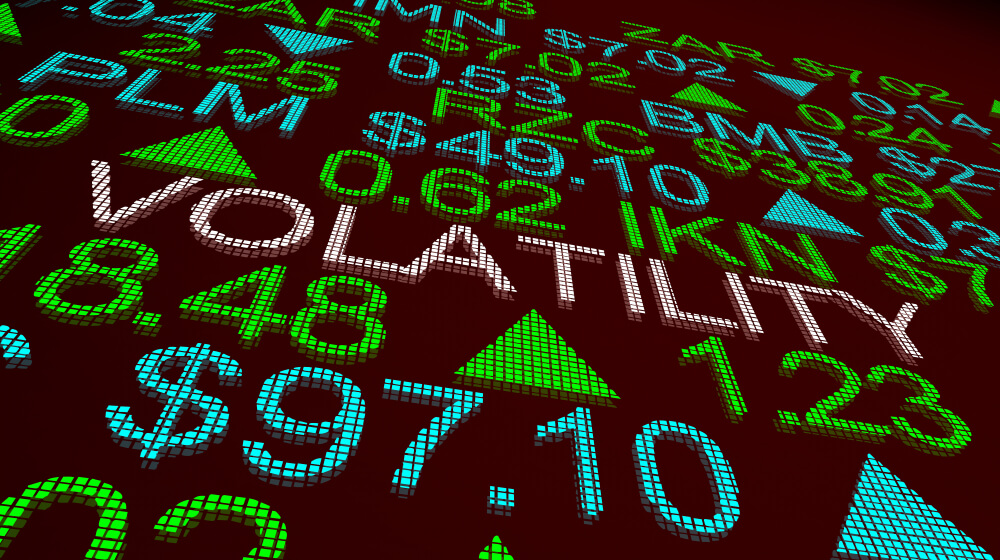Market volatility is back in a big way. But we can use that to our advantage.
Now, you need to understand a simple truth that Wall Street would rather keep to itself: When stock prices fall … volatility rises.
Wall Street even invented a special indicator for this. It’s called the CBOE Volatility Index (VIX).
You may have heard it called the VIX or even the fear index since it tends to spike when investors panic.
Well, the VIX spiked last month. It was nowhere near the size of the COVID-19 volatility spike, but it was still the biggest spike we’ve seen since January 2021.
And volatility has remained elevated throughout February as the sell-off continues. The VIX hovered around the 30-point level on Wednesday, a day after the S&P 500 went into correction territory (a 10% drop from recent highs).
Market Volatility Strikes
When the market behaves as it is now … well, most of the stocks in your portfolio will experience volatility.
However, some stocks are prone to volatility even when markets are calm. The stocks that rise and fall on those calm days are what we call high-volatility stocks.
Now, I know what Wall Street would tell you. Perhaps you’ve even told yourself this:
To make higher returns, you must take more risk.
But that isn’t the whole truth.
Compared to bonds, for instance, stocks have historically provided much stronger returns. They are indeed both riskier and more volatile than bonds.
But when you look within the stock market, folks, it isn’t that simple.
High volatility — those intraday swings in stock prices — doesn’t always mean higher returns.
I’ll show you what I mean.
Green Zone Ratings Factors in Stock Price Swings
Along with an overall score, my proprietary Green Zone Ratings system ranks stocks between 0 and 100 on six factors:
- Momentum.
- Size.
- Volatility.
- Value.
- Quality.
- Growth.
One thing to note: The higher a stock’s volatility score in my system … the less volatile it is. That might seem counterintuitive but stay with me.
A stock can earn a low score in size (meaning it’s a large-cap or mega-cap stock) — but it can still outperform the market. This is despite the research showing that smaller stocks are more likely to beat the market in the long run. But we saw it with our own eyes with large-cap tech dominance over the past several years.
Similarly, you may not earn the absolute highest return if you buy stocks with the absolute highest Green Zone volatility score (i.e., the lowest volatility).
It turns out that buying stocks with high and average Green Zone volatility scores (think: 21 and higher), all other factors being equal, will give you fairly similar returns.
The Best Thing About My Volatility Rating
What’s most helpful about my Green Zone volatility factor is that it can tell you the stocks to avoid at all costs.
Over time, the horrible underperformance of the market’s 20% most volatile stocks (rated 0-20 on my scale) is the biggest driver of the volatility factor.
Based on volatility alone, 80% of all stocks in the market look OK.
It’s the worst 20% — the highest-volatility stocks — we need to worry about. Because over time, they will crush you!
The academic research on this unique factor tells us precisely the type of company to avoid at all costs: small, high-volatility “growth” companies that are unprofitable.
I call these companies “high-beta bombs,” and I recommend you avoid them even in the best of times. This is all the more important in a time like today when overall market volatility is so much higher than usual.
How to Navigate Volatile Markets Now
But it helps me avoid some of the worst stocks out there.
I’m not going to recommend you load up your portfolio exclusively on stocks that show ultra-low volatility. You can’t win a game by focusing exclusively on defense.
But given a choice between two stocks that both rank highly on momentum, value, growth and quality … we can further tip the odds in our favor by choosing the one with lower volatility (i.e., the higher Green Zone volatility score).
To good profits,
Adam O’Dell
Chief Investment Strategist
